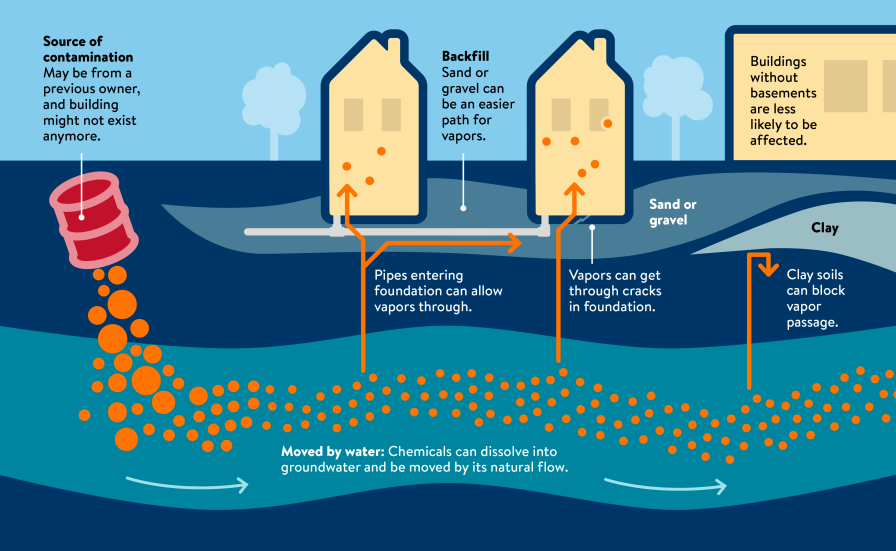
Vapor intrusion occurs when chemical vapors migrate from contaminated groundwater through the soil into the basements or foundations of buildings. The source of contamination may be from many years previous. The chemicals can dissolve into groundwater and move by following the natural flow of the groundwater. Then the chemicals can enter buildings through foundations following pipes or cracks in foundations. Buildings without basements are less likely to be affected by these chemicals. Soil types can affect the passage of chemicals; sand or gravel which is often used for backfill around buildings can be an easier path for vapors, clay can block vapor passage. These chemical vapors can degrade indoor air, sometimes to the point of posing risks to human health. See the Minnesota Department of Health web site for information about soil vapors and human health.
Testing for soil vapors
If your home or building is in near a contaminated property, the soil under your structure may have been tested for chemical vapors. These are called sub-slab soil vapor samples. A certified laboratory tests these samples and determines the level, if any, of chemical contamination in the soil vapor. The MPCA uses these results to decide what needs to be done to protect the health of the building’s occupants. Learn more:
If testing shows that vapor intrusion could be a concern, a common solution is to install a mitigation system. Vapor mitigation systems work by creating a vacuum under the building which prevents soil vapors from entering the building. This type of system is also widely used to prevent naturally occurring radon gas from entering buildings. The systems are inexpensive to operate and are a proven solution for vapor intrusion and radon problems.
Reevaluating contaminated sites for vapor issues
Our knowledge of vapor intrusion is relatively recent, thanks to newer research and advancements in detection. In the past, contaminated sites were viewed in terms of their effects on groundwater, not their ability to contaminate indoor air. The MPCA will assess new sites for vapor intrusion, but also must reevaluate sites that were considered closed.
Professional resources
See the Vapor intrusion guidance page for information on best management practices and intrusion screening values.